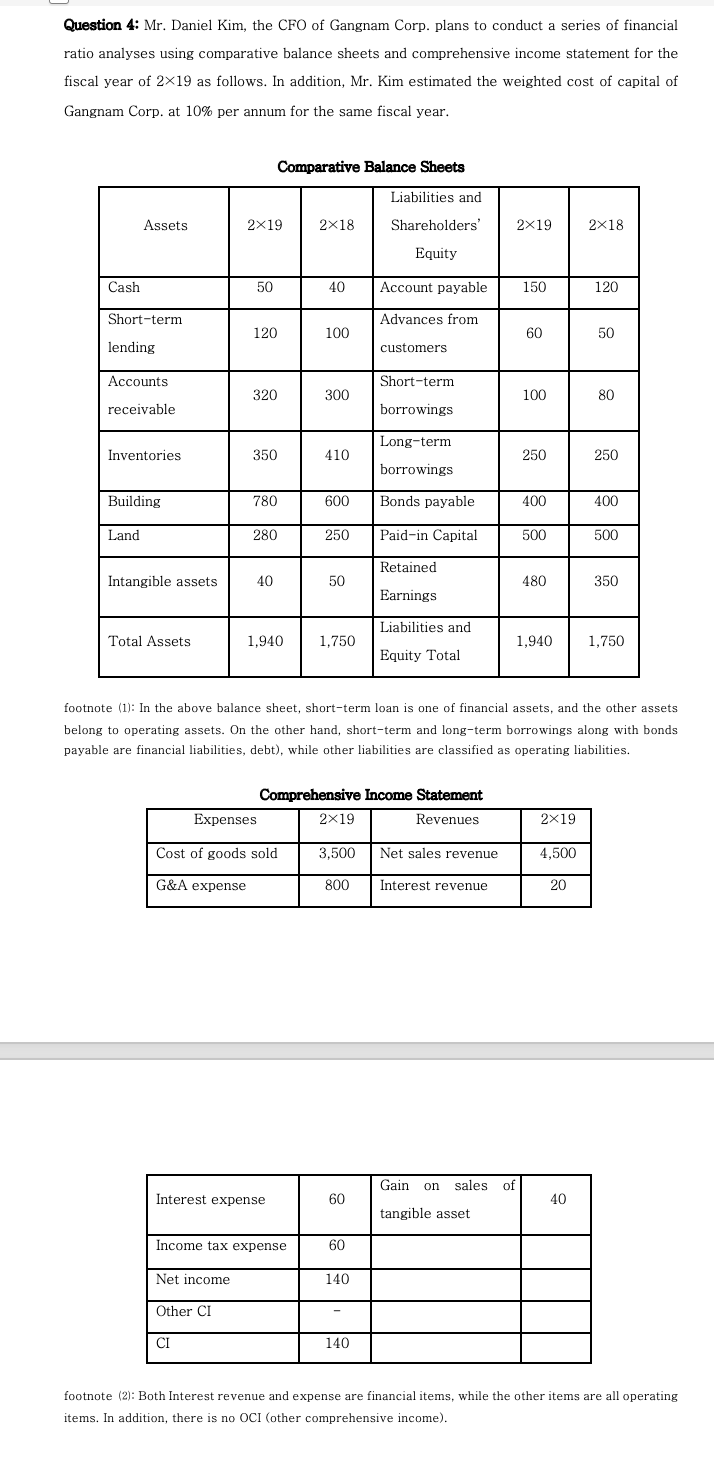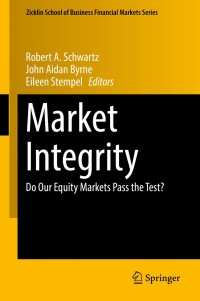Question
Required 1 : Compute financial ratios below. (5 points each, marginal tax rate = 30%) ROE(Return on Equity) for the year 219. ROE = Net

Required 1 : Compute financial ratios below. (5 points each, marginal tax rate = 30%)
ROE(Return on Equity) for the year 219.
ROE = Net income/(Beginning Balance of equity + Ending balance of equity)2
RNOA(Return on Net Operating Asset) of 219.
where RNOA = Net operating income (after tax) / (Beginning NOA + Ending
NOA)2,
and Net Operating assets (NOA) = Operating assets Operating liabilities.
Net operating income after tax = (Operating revenue Operating expense)
(1 marginal tax rate)
Net Borrowing Cost Ratio of 219
Net Borrowing Cost (NBC) ratio = Net Borrowing Cost after tax/(Net financing liabilities at the year beginning + Net financing liabilities at the year-end)2.
Net Borrowing Cost after tax = (Interest expense Interest revenue) (1
marginal tax rate)
Net financing liabilities = Financing liabilities Financial assets
Residual Operating Income (ReOI) of 219.
ReOI = Net operating income of 219 Net Operating assets at the end of 218 Weighted average cost of capital
Required 2 : If you are a financial advisor to Mr. Kim and it is expected that both RNOA and NBC ratio will be constant for the next several year, do you believe that a borrowing expansion strategy from outside is rational for Gangnam Corp? Suggest the reason for your judgement. (5 points)
Question 4: Mr. Daniel Kim, the CFO of Gangnam Corp. plans to conduct a series of financial ratio analyses using comparative balance sheets and comprehensive income statement for the fiscal year of 219 as follows. In addition, Mr. Kim estimated the weighted cost of capital of Gangnam Corp. at 10% per annum for the same fiscal year. footnote (1): In the above balance sheet, short-term loan is one of financial assets, and the other assets belong to operating assets. On the other hand, short-term and long-term borrowings along with bonds payable are financial liabilities, debt), while other liabilities are classified as operating liabilities. footnote (2): Both Interest revenue and expense are financial items, while the other items are all operating items. In addition, there is no OCI (other comprehensive income)Step by Step Solution
There are 3 Steps involved in it
Step: 1

Get Instant Access to Expert-Tailored Solutions
See step-by-step solutions with expert insights and AI powered tools for academic success
Step: 2

Step: 3

Ace Your Homework with AI
Get the answers you need in no time with our AI-driven, step-by-step assistance
Get Started


